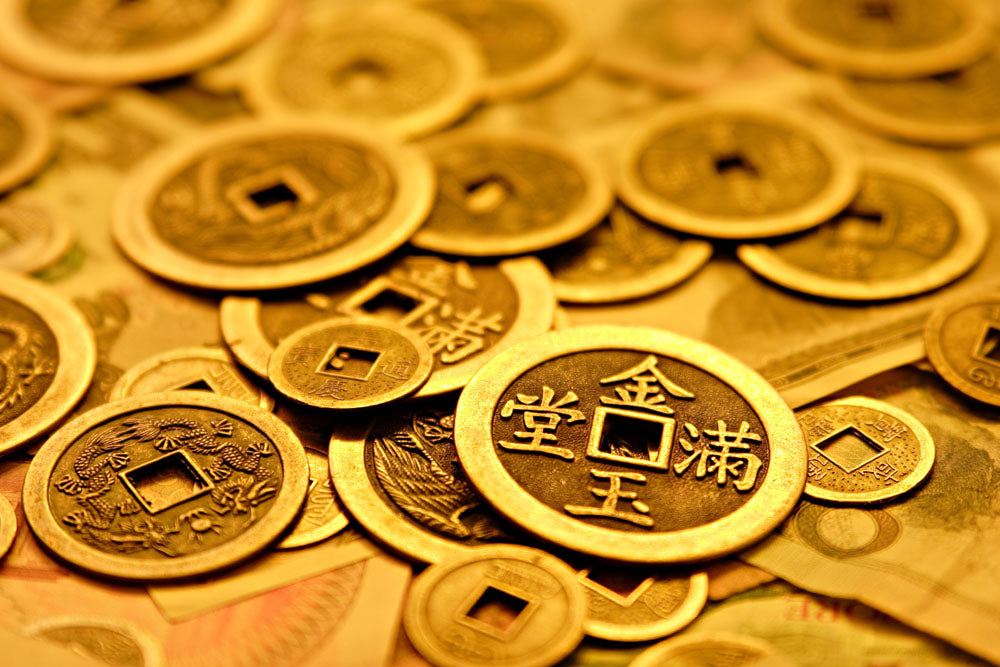
The Story of Chinese Copper Coins
Share
Chinese copper coins, known as tongqian (铜钱) or "cash coins," represent one of history’s most enduring and iconic forms of currency. Used for over two millennia, these coins tell a story not only of trade and economy but also of philosophy, culture, and spiritual belief.
Historical Origins
The first standardized copper coins appeared during the Qin Dynasty (221–206 BCE), when China was unified under Emperor Qin Shi Huang. These early coins were circular with a square hole in the center—a design that would remain largely unchanged for more than 2,000 years.
The square hole had a practical purpose: it allowed coins to be threaded together into strings of 100, 500, or even 1,000 coins, creating higher denominations called diaos (吊). This made storage, counting, and transport easier in an era without paper money or banking systems.
During the Han Dynasty, inscriptions were added, often featuring the emperor’s reign title or auspicious phrases. These coins were cast in molds, not struck like Western coins, reflecting China’s advanced metallurgical skills.
Over time, the coin’s use spread across Asia through the Silk Road, influencing monetary systems in Korea, Japan, Vietnam, and even Central Asia.

Symbolism and Meaning
The simple yet profound design of the coin carries layered meanings rooted in Chinese thought:
Cosmic Symbolism
The round outer shape symbolizes heaven (天 tian), while the square inner hole represents earth (地 di). This reflects the ancient Chinese philosophy of Tian Yuan Di Fang (天圆地方)—"Heaven is round, Earth is square." The coin served as a miniature model of the universe, embodying harmony between cosmic forces.
Balance and Integrity
In Confucian ideology, the square symbolizes order, honesty, and moral integrity—a person with a "square character" (方正) is upright and principled. The circle represents flexibility, smoothness, and the ability to adapt. Together, they suggest an ideal: be inwardly firm in ethics, yet outwardly graceful in social conduct.
Wealth and Fortune
As currency, the coins naturally symbolized wealth. But beyond material value, they were—and still are—used in Feng Shui to attract prosperity. Coins tied with red thread are placed in homes, wallets, or cash registers to enhance financial luck. Three coins tied together are especially powerful, representing heaven, earth, and humanity in unity.
Protection and Blessing
In folk tradition, copper coins were believed to ward off evil. They were often buried under gateways, worn as amulets, or placed in shrines. Historical accounts mention coins being sewn into clothing or hung in carriages for safety during travel.

Cultural Legacy
Even after China transitioned to modern currency, copper coins retained cultural significance:
They are used in traditional ceremonies, such as weddings and temple offerings.
They appear in Chinese idioms, like qián néng tōng shén (钱能通神, “Money can move even gods”).
They influence art and design, symbolizing abundance and cosmic order.
Today, these coins remind us of a civilization that saw money not just as a medium of exchange, but as an object infused with spiritual and philosophical meaning. To hold an ancient Chinese coin is to touch a piece of history that bridges earth and heaven, matter and spirit.

